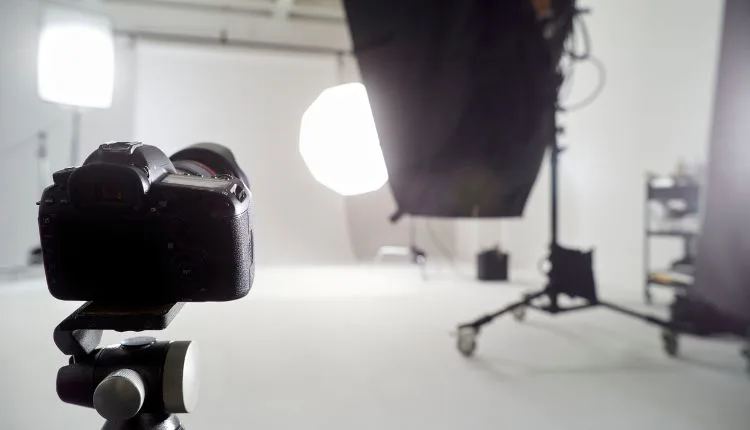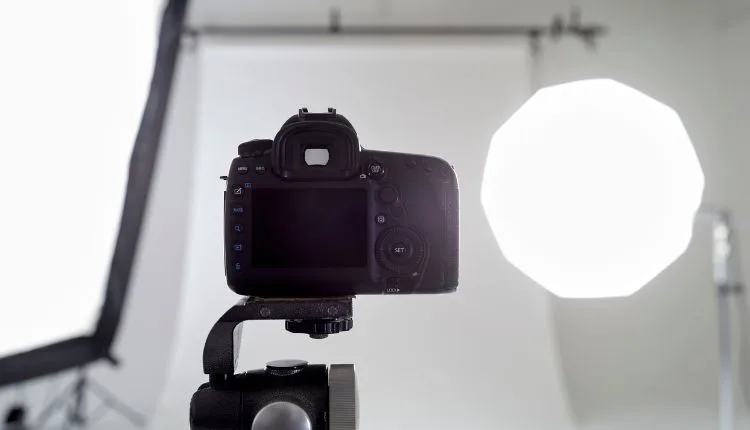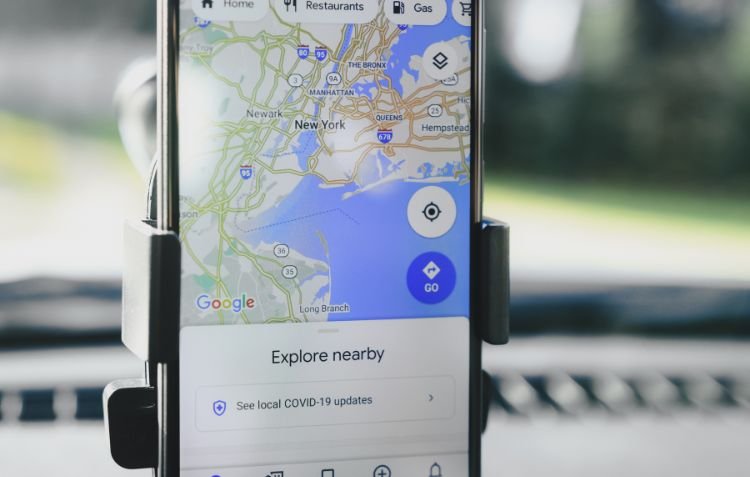How to Start a Photography Business in 7 Easy Steps
You love photography, but how do you turn that passion into a real business?
Starting a photography business isn’t just about taking great pictures — it’s about building a brand, finding clients, and running a sustainable operation. Whether you dream of shooting weddings, portraits, or commercial campaigns, the right plan can help you turn your talent into a thriving business.
The demand for professional photography continues to grow, especially with the rise of visual content in digital marketing. In fact, a recent report by IBISWorld shows that the U.S. photography industry alone is worth over $12.9 billion in 2024 and continues to expand with the rise in social media and online branding needs. Source: IBISWorld – Photography in the US Industry Report
In this guide, we’ll walk you through 7 practical steps on how to start a photography business — from business setup and branding to pricing and marketing — to help you confidently launch your photography business the right way.
Key Takeaways
- Choose a photography niche that matches your passion and local demand.
- Create a simple business plan to define your services and budget.
- Register your business legally and get the right insurance coverage.
- Build a strong brand with a professional name, logo, and website.
- Invest in beginner-friendly gear and essential editing tools.
- Use social media and local SEO to attract and convert leads.
- Start building your portfolio with free or discounted shoots.
- Stay organized, keep learning, and always use contracts for bookings.
Step 1 – Define Your Photography Niche
Before you promote yourself as a professional photographer, you need to decide what kind of work you want to be known for. Choosing the right niche helps guide your branding, pricing, gear selection, and marketing strategy.
Choose the Right Focus Area
The photography industry is broad, so it’s important to specialize in a niche that matches both your interests and the market demand. Some popular niches include:
- Portrait photography (family, lifestyle, senior)
- Wedding and event photography
- Real estate and architectural
- Product photography (ideal for e-commerce)
- Food photography (popular in cities with a strong restaurant scene)
- Travel and landscape
- Pet photography (growing rapidly in pet-loving countries like the US and UK)
Niching down makes it easier to market yourself and attract clients who are specifically looking for your style or service. Instead of being a generalist, you become the go-to expert in a specific type of photography, which also helps with pricing your services competitively.
Research Market Demand in Your Area
Understanding what’s in demand locally is key. Use tools like:
- Google Trends – see how often a niche is searched in your region.
- Facebook groups – join local photography or business groups and observe common photo needs.
- Yelp or Thumbtack – check what kinds of photographers are listed and how busy they are.
Example: In Toronto, wedding photography demand spikes between May and October, while indoor portrait sessions are popular during winter months.
Step 2 – Create a Simple Business Plan
A clear, realistic business plan helps you stay organized and focused. It doesn’t need to be formal or lengthy—just enough to define what you’re doing, who you’re doing it for, and how you’ll make money.
Set Your Goals and Services
Decide what kinds of sessions you’ll offer—family portraits, branding shoots, small weddings, etc. Be specific about:
- The types of services you want to focus on
- What makes your style or approach different
- Your availability (weekends only, full-time, etc.)
Also, define how you’ll package and price your work. Consider:
- Hourly rates vs. flat packages
- Add-ons like extra edits, prints, or rush delivery
- Discounts for repeat clients or referrals
Start with competitive pricing based on your skill level and gradually increase rates as you gain experience and build your portfolio.
Budget for Gear and Operating Costs
Set a budget that covers your essential equipment, software, website, insurance, and marketing.
If you’re just starting out:
- Canon EOS R50 or Nikon Z50 are excellent beginner mirrorless cameras.
- Lenses: 50mm prime for portraits, wide-angle for real estate or events.
Budget tip: Check secondhand gear websites like MPB.com or KEH.com to find professional-grade gear at affordable prices.
Don’t forget other costs like editing software (Lightroom, Photoshop), website hosting, and business licenses.
Step 3 – Register and Legalize Your Business

To run your photography business professionally and legally, you need to make sure all the paperwork is in place. This builds trust with clients and protects you from potential risks.
Choose a Business Structure
Select a structure that suits your needs:
| Country | Sole Proprietor | LLC / Limited Company |
| US | Simple, low cost | More protection, tax flexibility |
| UK | Sole trader (easy setup) | Limited company for liability |
| Canada | Sole proprietorship | Corporation for bigger operations |
| Australia | Sole trader | Company (Pty Ltd) for legal shield |
A sole proprietorship is faster to set up but doesn’t protect your personal assets. An LLC or limited company offers liability protection and more professional credibility, which can help when signing contracts with bigger clients.
Get Necessary Licenses and Insurance
Depending on your city or country, you may need:
- A business license or permit from your local council or city office
- State/province registration if you’re operating under a business name
Photography insurance is essential. It protects you from gear damage, accidents on shoots, or client disputes. Popular options:
- Hiscox (US, UK)
- Professional Photographers of America (PPA) – offers insurance and legal tools for members
- AAMI or BizCover (Australia)
Open a Business Bank Account
Keep your business and personal finances separate to make taxes and budgeting easier.
Set up:
- A business checking account
- A digital invoicing system
Recommended tools:
- Wave (free accounting)
- QuickBooks (paid but scalable for growth)
Step 4 – Build a Strong Brand Identity
Your brand is more than a logo—it’s how people perceive your work, your professionalism, and your personality. A strong brand builds trust and makes you memorable.
Choose a Business Name and Logo
Pick a name that’s short, easy to pronounce, and reflects your niche or style (e.g., “Luna Weddings” or “Frame & Focus”).
Design a simple but professional logo using:
- Looka – AI-powered logo creation
- Canva – Free templates for logos and branding kits
Be sure to check domain availability and social media handles before finalizing your name.
Create a Photography Website
Your website is your online storefront. It should be clean, fast, and mobile-friendly.
Platforms to consider:
- Squarespace – Beautiful templates and built-in SEO
- Wix – Great for beginners, drag-and-drop editor
- WordPress – Best for full customization (requires hosting)
Must-have pages:
- Portfolio (sorted by shoot type)
- Pricing or starting rates
- Contact form with location
- Testimonials or reviews
Write an SEO-Friendly About Page
Your About page should connect with potential clients. Share:
- Why you started photography
- Your style and approach
- A personal touch—like your favorite shoot or a fun fact about you
Use natural keywords like “portrait photographer in Chicago” or “Sydney wedding photography” to improve local SEO.
Step 5 – Get the Right Equipment and Tools
Starting a photography business means investing in the right tools. The gear you choose depends on your niche, but a basic kit can cover most jobs to start with.
Essential Gear Checklist
Begin with a quality camera body like the Canon EOS R50 or Sony A6400—both are budget-friendly mirrorless options with solid performance. Invest in a couple of versatile lenses: a 50mm prime lens for portraits and an 18–135mm zoom lens for flexibility. Don’t forget essentials like high-speed SD cards, a sturdy tripod, and external flashes or softbox lighting for indoor shoots.
Example: For food photography, a macro lens like the Canon 100mm f/2.8L captures detailed close-ups with beautiful background blur.
Post-Production and Storage
Editing is just as important as shooting. Use professional software like Adobe Lightroom (great for batch editing) or Capture One (popular for studio work). Store your files safely with external SSDs (e.g., Samsung T7) and back them up using Google Drive, Dropbox, or Backblaze for cloud storage. This keeps your client work secure and organized.
Step 6 – Create a Marketing Strategy That Work

You don’t need a big budget to promote your photography business—just the right strategy. A smart marketing plan helps you get noticed and build trust.
Use Social Media to Showcase Your Work
Instagram, Facebook, and Pinterest are goldmines for photographers. Post high-quality images, behind-the-scenes shots, and before-and-after edits to engage your audience. Use local hashtags like #TorontoPhotographer or #NYCWeddingPhotos and tag your location for discoverability.
Tip: Share client stories in captions to connect on a personal level.
Local SEO for Photographers
Set up and optimize your Google Business Profile with photos, services, hours, and contact info. Use local keywords in your website and profile—e.g., “portrait photographer in Seattle.” Ask satisfied clients to leave Google reviews to build credibility and improve search visibility.
Run Limited-Time Offers or Mini Sessions
Create urgency with short promotions. For example:
“$99 Spring Mini Sessions – 20-minute shoot + 3 edited images. Book before April 30!”
These deals attract new clients and help fill your calendar quickly.
Step 7 – Start Finding and Booking Clients
Once you’ve got your gear and branding ready, it’s time to find clients. Start small, build trust, and let your work speak for itself.
Build Your Portfolio with Free or Discounted Shoots
Offer complimentary sessions to friends, family, or local nonprofits. These shoots help you practice, build your portfolio, and gather testimonials. Make sure you get permission to use these images for marketing.
Tip: Always deliver a great experience, even if the shoot is free—it builds referrals.
Network with Local Businesses and Creatives
Collaborate with makeup artists, florists, stylists, or event planners. These professionals can refer clients your way. Also, join local business groups, online directories, or networking platforms like Bark, Thumbtack, and Yelp to boost visibility.
Use Online Platforms
Sign up for platforms like Snappr, Fiverr, or Upwork to get your first few paid gigs.
Example: “A London-based photographer booked 20 clients through Bark within 3 months by offering competitive rates and excellent service.”
Bonus Tips on How to Start a Photography Business
Running a successful photography business is about more than just taking great photos. Here are a few practical tips to stay on track:
- Always use contracts. Tools like HoneyBook or Bonsai help you create legal agreements and manage bookings with ease.
- Keep learning. Free resources on YouTube, Skillshare, and Coursera can help you improve your skills in photography, editing, and business management.
- Stay organized. Use tools like Trello (task management), Calendly (booking sessions), and Notion (all-in-one workspace) to streamline your workflow.
Pro Tip: Set weekly goals and review your progress every month.
Stay focused, stay creative, and don’t get discouraged by slow starts. Most successful photographers began with one camera, a small network, and a lot of persistence.
Conclusion
Starting a photography business doesn’t have to be overwhelming. With the right steps, you can turn your passion into a full-time income.
Here’s a quick recap: Pick a niche, plan smart, legalize your business, build a strong brand, market effectively, and start booking clients. Equip yourself with the right tools and never stop learning along the way.
Even if you start small, every shoot brings you closer to becoming a full-time photographer. Keep going, stay consistent, and be proud of every win—big or small.
Got photography goals of your own? Drop them in the comments or subscribe to our newsletter for more step-by-step small business guides just like this one.
FAQs
What legal steps are necessary to start a photography business?
To legally start a photography business, choose a business structure (e.g., sole proprietorship or LLC), register your business name, obtain necessary licenses or permits, and consider liability insurance to protect your assets.
How do I determine pricing for my photography services?
Set your pricing by analyzing local market rates, evaluating your skill level, calculating costs (equipment, travel, editing time), and considering your desired profit margin.
What equipment is essential for a beginner photographer?
Start with a reliable camera body, versatile lenses (like a 50mm prime and 18–135mm zoom), memory cards, a sturdy tripod, and basic lighting equipment. As you grow, invest in additional gear tailored to your niche.
How can I effectively market my photography business?
Utilize social media platforms to showcase your work, optimize your website for local SEO, network with local businesses, and consider offering limited-time promotions or mini-sessions to attract new clients.
Why is defining a photography niche important?
Specializing in a specific photography genre helps you stand out in a crowded market, attract your ideal clients, and tailor your marketing efforts more effectively.







